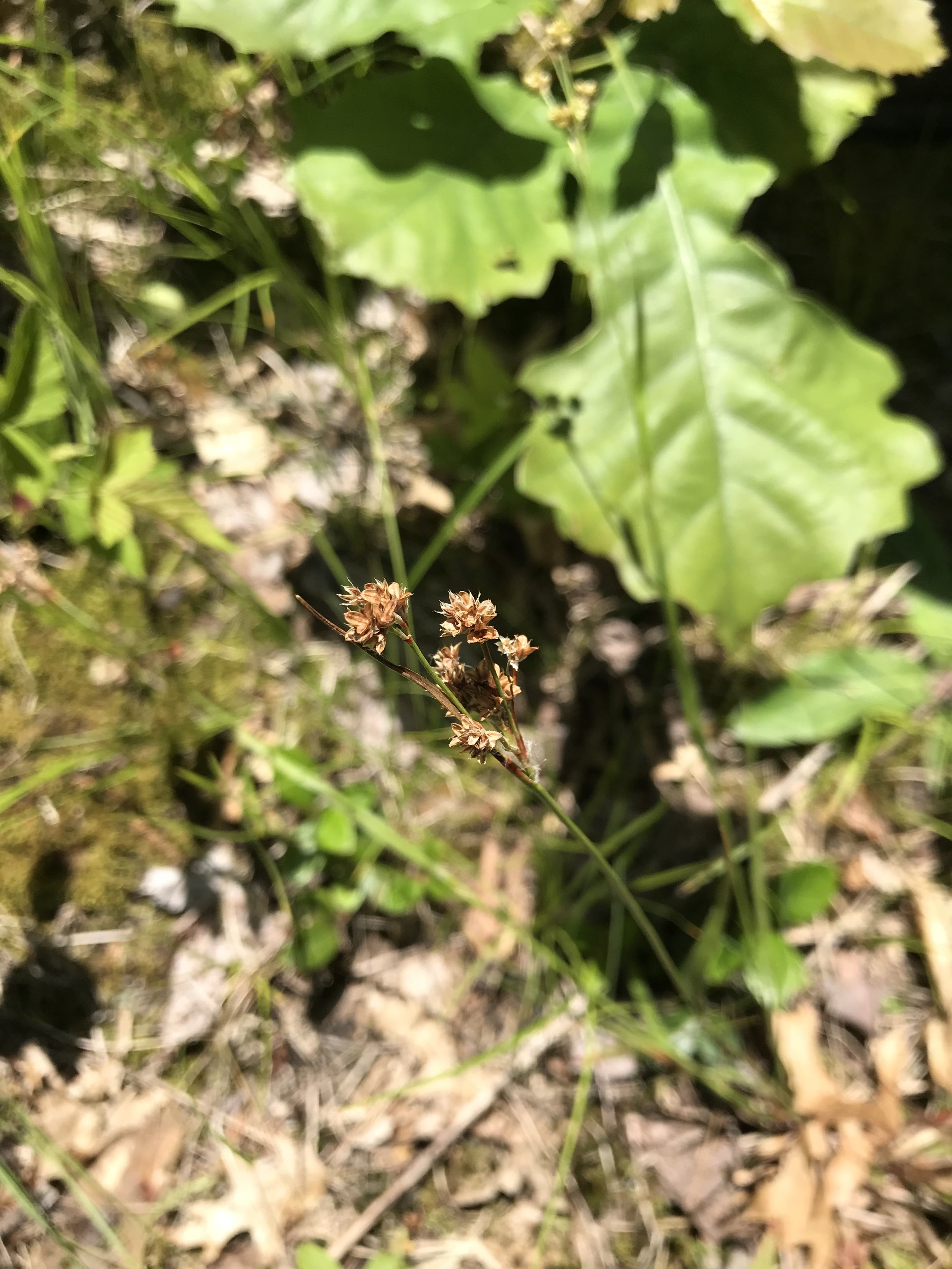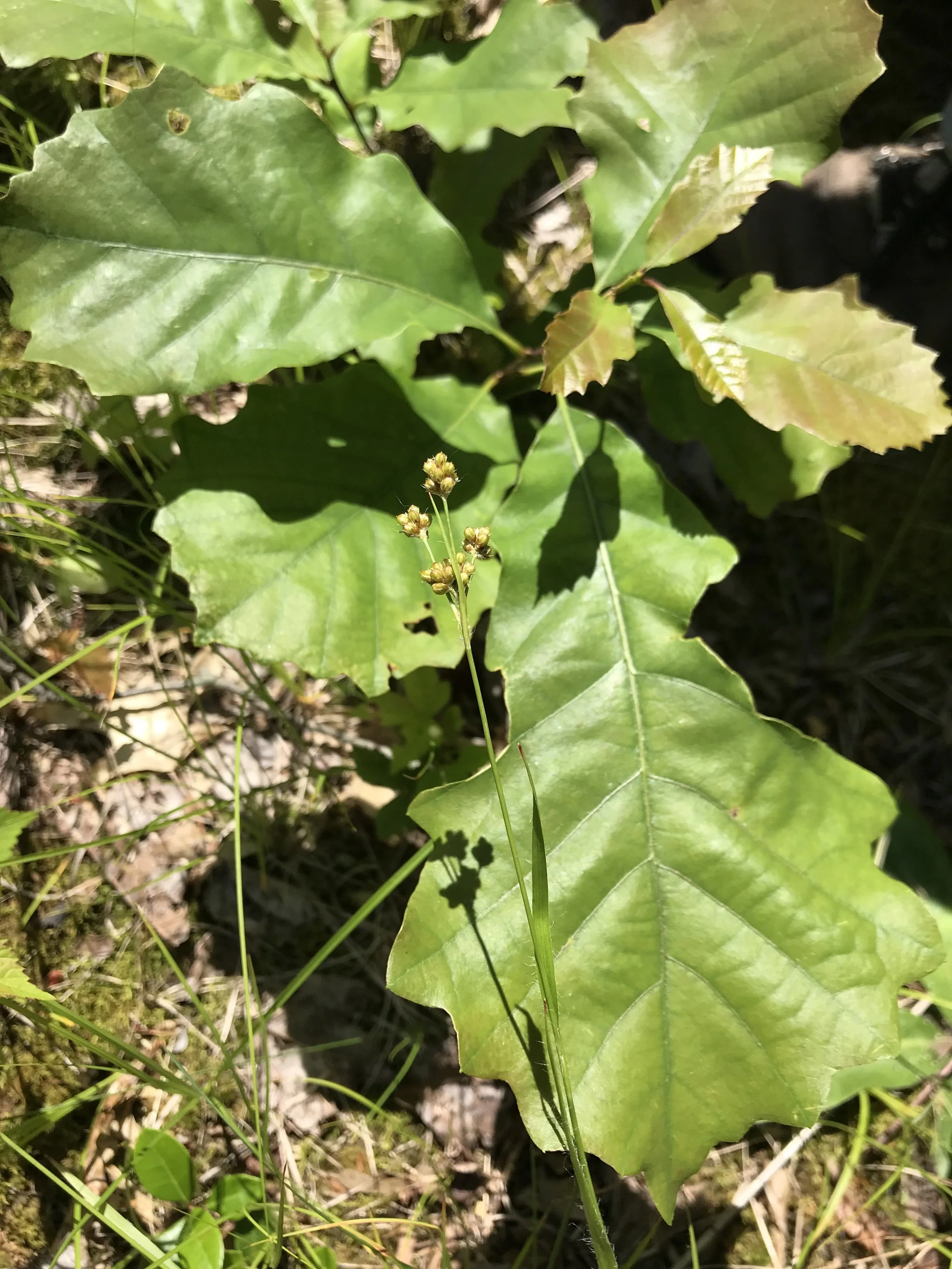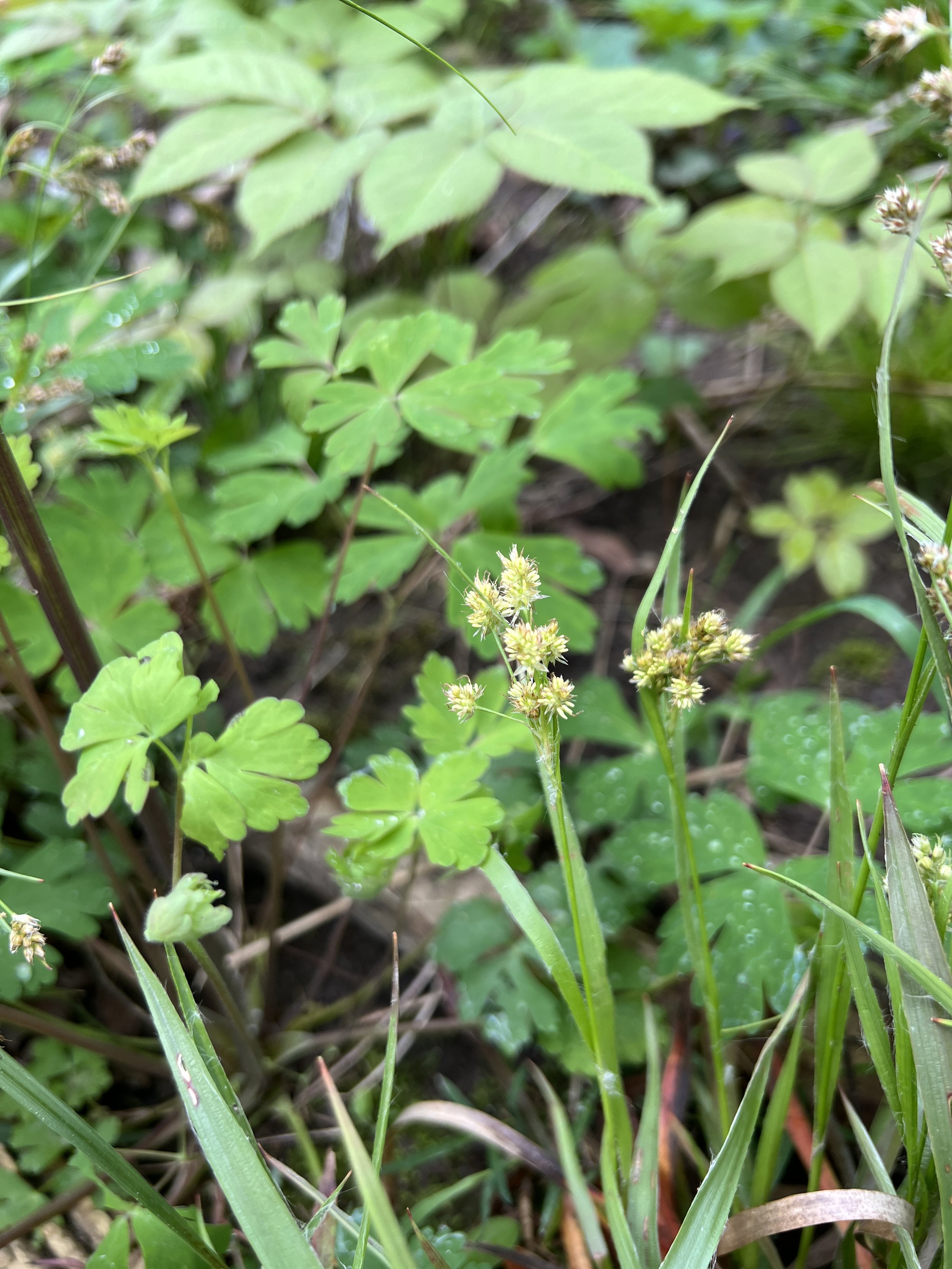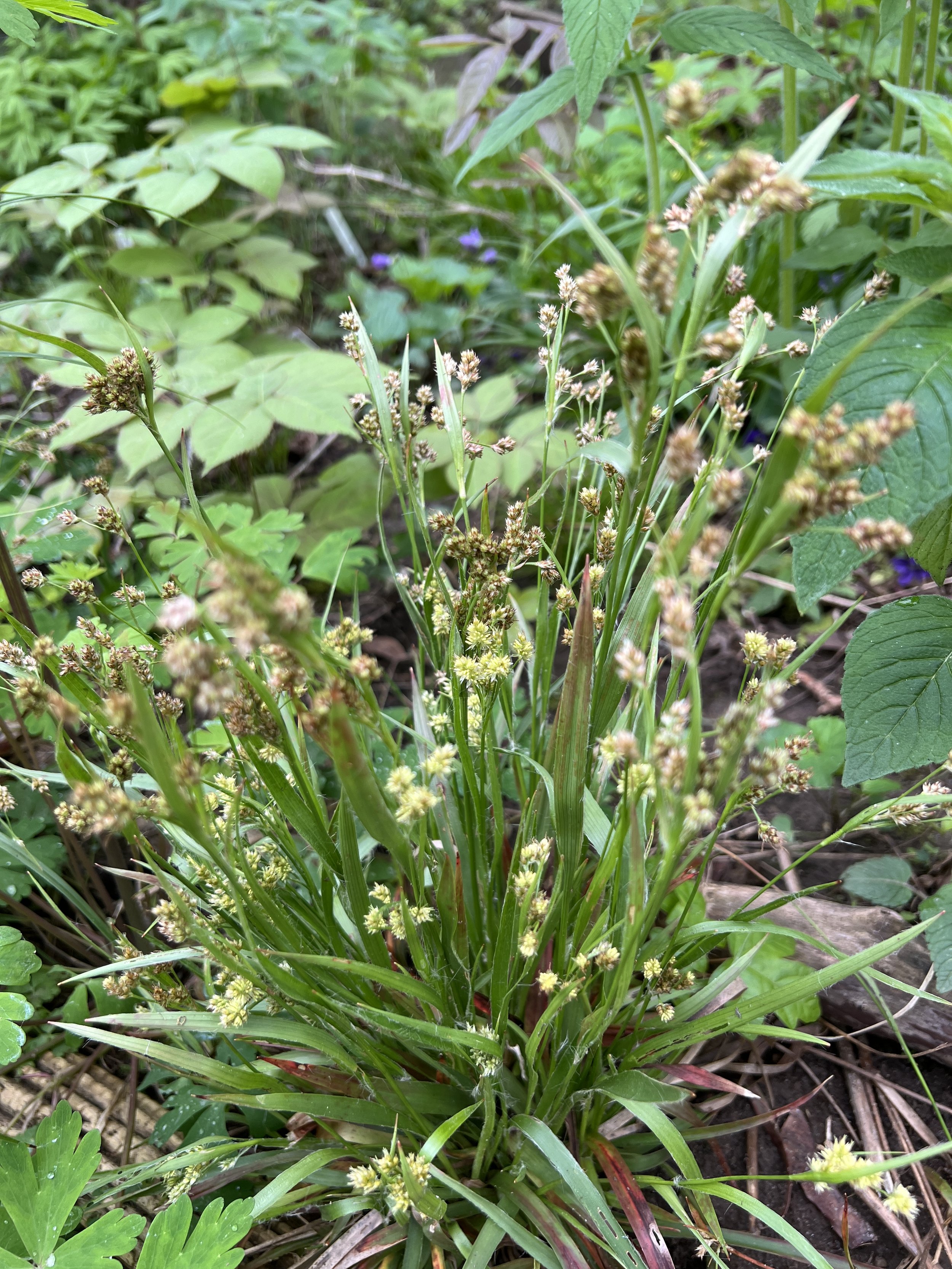Common Woodrush (Luzula multiflora)
There are three species of woodrush that are native in Michigan and Common Woodrush is one of them. Note: there are two introduced species of woodrush in the upper peninsula.
Unlike some other rushes, this plant likes things dry. If there is a steep riverbank, the woodrush will usually be right at the top. Common Woodrush can be found growing with Hairy Woodrush (Luzula acuminata). The third woodrush is a threatened species found only in a couple of UP counties.
Rushes are definitely not boring! Though they are generally wind pollinated, they do have flowers, but you may need to get down low to view them since this plant grows only about a half foot tall (leaves may continue to grow taller as the season progresses). Flowers have six tepals (a term used when there isn’t differentiation between petals and sepals), stamens and pistils. The leaves have long hairs coming out of their edges which makes them easy to identify. This species has many flowers attached to a single flower stem.
This is a great option for dry, wooded areas. It is not often grown in the nursery trade so we are excited to offer it for sale!
Common Woodrush (Luzula multiflora)
Michigan Flora reference page for state distribution: Common Woodrush
height: 6 inches
bloomtime: Apr-June
soil: medium-dry
sun: partial, shade
plant spacing: 8”
flower: yellow-green-brown
life cycle: perennial
family: Juncaceae
There are three species of woodrush that are native in Michigan and Common Woodrush is one of them. Note: there are two introduced species of woodrush in the upper peninsula.
Unlike some other rushes, this plant likes things dry. If there is a steep riverbank, the woodrush will usually be right at the top. Common Woodrush can be found growing with Hairy Woodrush (Luzula acuminata). The third woodrush is a threatened species found only in a couple of UP counties.
Rushes are definitely not boring! Though they are generally wind pollinated, they do have flowers, but you may need to get down low to view them since this plant grows only about a half foot tall (leaves may continue to grow taller as the season progresses). Flowers have six tepals (a term used when there isn’t differentiation between petals and sepals), stamens and pistils. The leaves have long hairs coming out of their edges which makes them easy to identify. This species has many flowers attached to a single flower stem.
This is a great option for dry, wooded areas. It is not often grown in the nursery trade so we are excited to offer it for sale!
Common Woodrush (Luzula multiflora)
Michigan Flora reference page for state distribution: Common Woodrush
height: 6 inches
bloomtime: Apr-June
soil: medium-dry
sun: partial, shade
plant spacing: 8”
flower: yellow-green-brown
life cycle: perennial
family: Juncaceae
There are three species of woodrush that are native in Michigan and Common Woodrush is one of them. Note: there are two introduced species of woodrush in the upper peninsula.
Unlike some other rushes, this plant likes things dry. If there is a steep riverbank, the woodrush will usually be right at the top. Common Woodrush can be found growing with Hairy Woodrush (Luzula acuminata). The third woodrush is a threatened species found only in a couple of UP counties.
Rushes are definitely not boring! Though they are generally wind pollinated, they do have flowers, but you may need to get down low to view them since this plant grows only about a half foot tall (leaves may continue to grow taller as the season progresses). Flowers have six tepals (a term used when there isn’t differentiation between petals and sepals), stamens and pistils. The leaves have long hairs coming out of their edges which makes them easy to identify. This species has many flowers attached to a single flower stem.
This is a great option for dry, wooded areas. It is not often grown in the nursery trade so we are excited to offer it for sale!
Common Woodrush (Luzula multiflora)
Michigan Flora reference page for state distribution: Common Woodrush
height: 6 inches
bloomtime: Apr-June
soil: medium-dry
sun: partial, shade
plant spacing: 8”
flower: yellow-green-brown
life cycle: perennial
family: Juncaceae
We hope to eventually offer another species of woodrush, Hairy Woodrush (Luzula acuminata). The difference in this species is that the flower stalks contain only one flower. It’s interesting that it has the generic name hairy woodrush, since all of our woodrushes are hairy!





